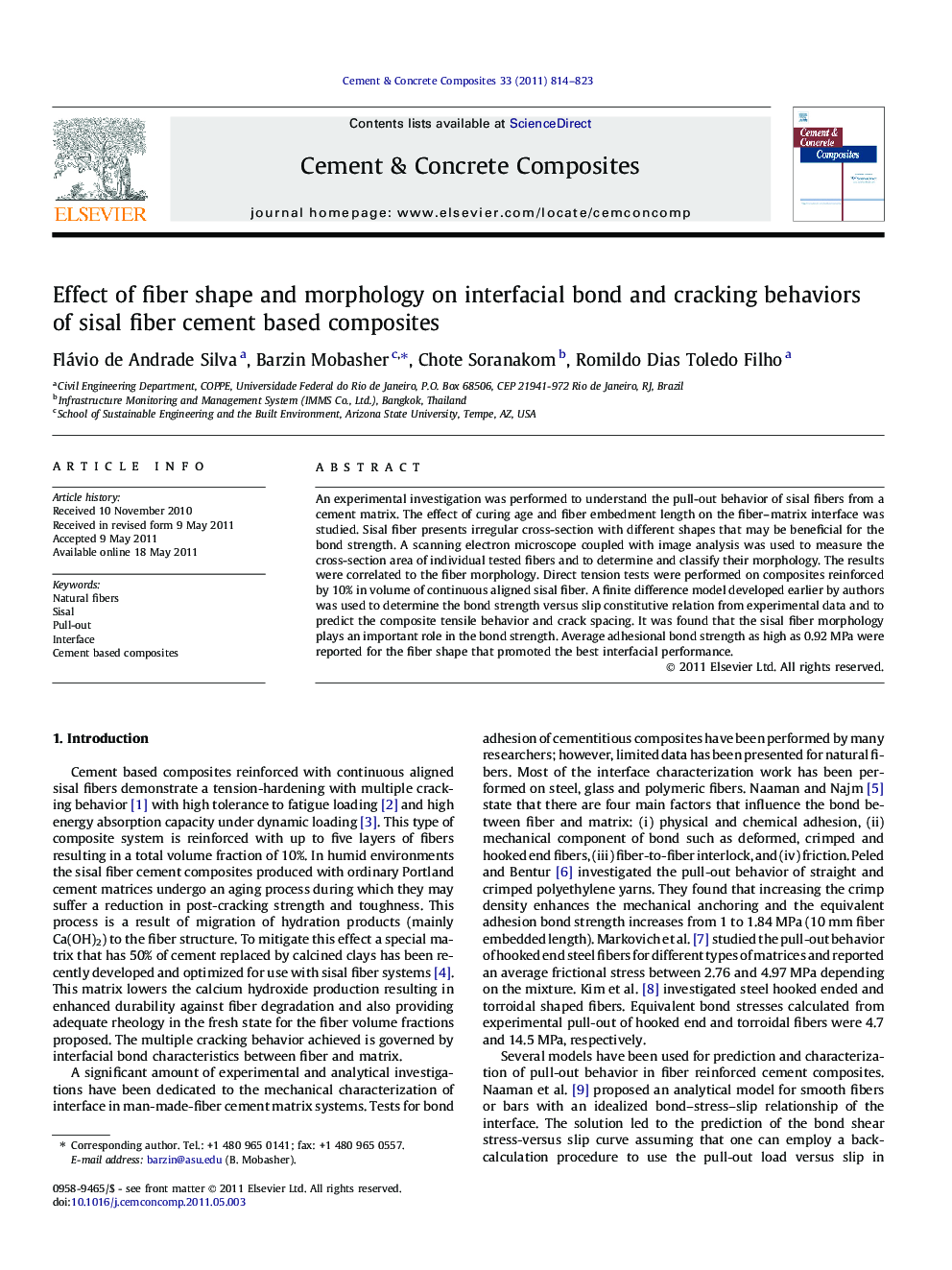| Article ID | Journal | Published Year | Pages | File Type |
|---|---|---|---|---|
| 1455211 | Cement and Concrete Composites | 2011 | 10 Pages |
An experimental investigation was performed to understand the pull-out behavior of sisal fibers from a cement matrix. The effect of curing age and fiber embedment length on the fiber–matrix interface was studied. Sisal fiber presents irregular cross-section with different shapes that may be beneficial for the bond strength. A scanning electron microscope coupled with image analysis was used to measure the cross-section area of individual tested fibers and to determine and classify their morphology. The results were correlated to the fiber morphology. Direct tension tests were performed on composites reinforced by 10% in volume of continuous aligned sisal fiber. A finite difference model developed earlier by authors was used to determine the bond strength versus slip constitutive relation from experimental data and to predict the composite tensile behavior and crack spacing. It was found that the sisal fiber morphology plays an important role in the bond strength. Average adhesional bond strength as high as 0.92 MPa were reported for the fiber shape that promoted the best interfacial performance.
